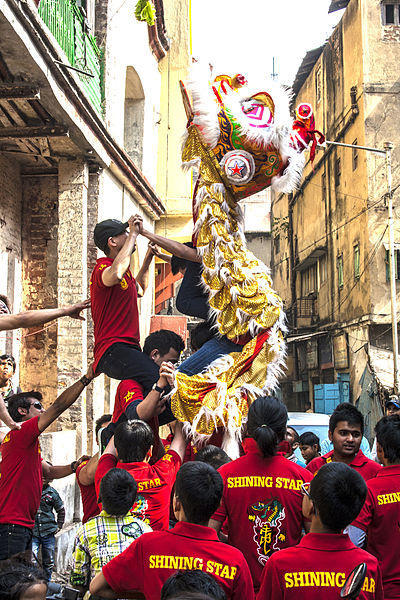By DOUGLAS PIZA, 2/21/2016. The story of my summer trip to India begins far from this country. In June and July I’m going to investigate the Chinese diaspora in India, especially in Kolkata; and yet this story does not begin in China either. It begins in the borderlands between Paraguay and Brazil, where I have been conducting my doctoral research since 2012.
My doctoral research focuses on the role of trade diaspora for the emergence of a very peculiar border commerce between Ciudad del Este and Foz do Iguaçu (Paraguay and Brazil, respectively). Chinese mainlanders and Taiwanese diaspora migrants are second only to the Lebanese migrants as the most numerous group of merchants in that area. The story of my summer in India begins with these Chinese merchants.
Interviewing the Chinese merchants in this rather understudied chapter of the Chinese diaspora, I discovered that their story prior to arriving in South America was diverse but that similar economic and political issues shaped their migration.
Not all Chinese merchants I interviewed (nor their family) have lived in India, but some have migrated to Kolkata and other Indian cities. The number of newly arrivals increased especially after Mao Zedong came to power in China, which ultimately contributed to the establishment of Chinatowns in these cities. While many migrated in the first two years of the Maoist period, when borders were not so closed as they soon became, others migrated from Southeast Asian countries fleeing social discrimination, political persecution or the fear of annexation by the Beijing’s government.
Their decision to leave India is affected by the 1962 Sino-Indian War and the political turmoil it generated. I will further comment on these issues in the next posts; hopefully after learning more in this summer.
By now, it is interesting to note that these Chinese migrants did not go directly Ciudad del Este – the city itself had just been created by decree five years before. In fact, when they arrived to the borderland more than two decades later, they had lived in countries in Africa and South America. This contrasts with the mainstream narrative about Chinese and Indian-Chinese leaving the country via repatriation (the preferred option by the Indian government) or resettling in Australia, United States, and especially Canada.
When they arrived in Ciudad del Este, the majority of Asian migrants were from Lebanon and Taiwan, and the city was already a promise of economic profit based on border commerce. It would still keep on thriving, reaching its peak in the 1990s decade. Today, this commerce is less intense, and it is believed that only around 9,000 people make up for the ethnic Chinese and Taiwanese in these borderlands.
After 1962 the number of Chinese living in India dropped significantly. Offspring also tends to emigrate, so the small Chinatowns in India (such as the ones in Mumbai, Bangalore, and Hyderabad) and even the bigger one in Kolkata have been gradually shrinking. The Indian Chinese Association reported that from an estimate of about 50,000 ethnic Chinese in India (not including Tibetans) in its peak between 1949 and 1962, only about 6,000 ethnic Chinese live in India, three quarters of which are concentrated in Kolkata. On the other hand, Chinese association members keep the diaspora spirit alive and try to transmit it to the new generations.

More recent, as the Sino-Indian relations slowly ameliorate, Chinese expats initiated new migration routes to Delhi, Mumbai, Bangalore, Gurgaon, and other cities. These new migrants tend to live shorter periods in India according to their work stints and in compliance with restrict visa requirements. They do not necessarily reconnect with older generations. Indians seeking to work in China or with Chinese companies, however, have reached out to the Chinese associations in India.
My summer research project seeks to analyze the historical conditions that shaped Chinese migrants’ mobility to India, especially Kolkata. What is the history of these Chinese migrants? What is behind the migration back to China or elsewhere? How cultural, social and ideological ties between these migrants and other overseas Chinese are built and change over time? How recent migration from different geographic locations in China and diverse socio-cultural backgrounds have been relating to the more historical communities? How Chinese local and central governments enact policies of diaspora engagement with these populations? I hope that over the summer I can answer some of these questions.
